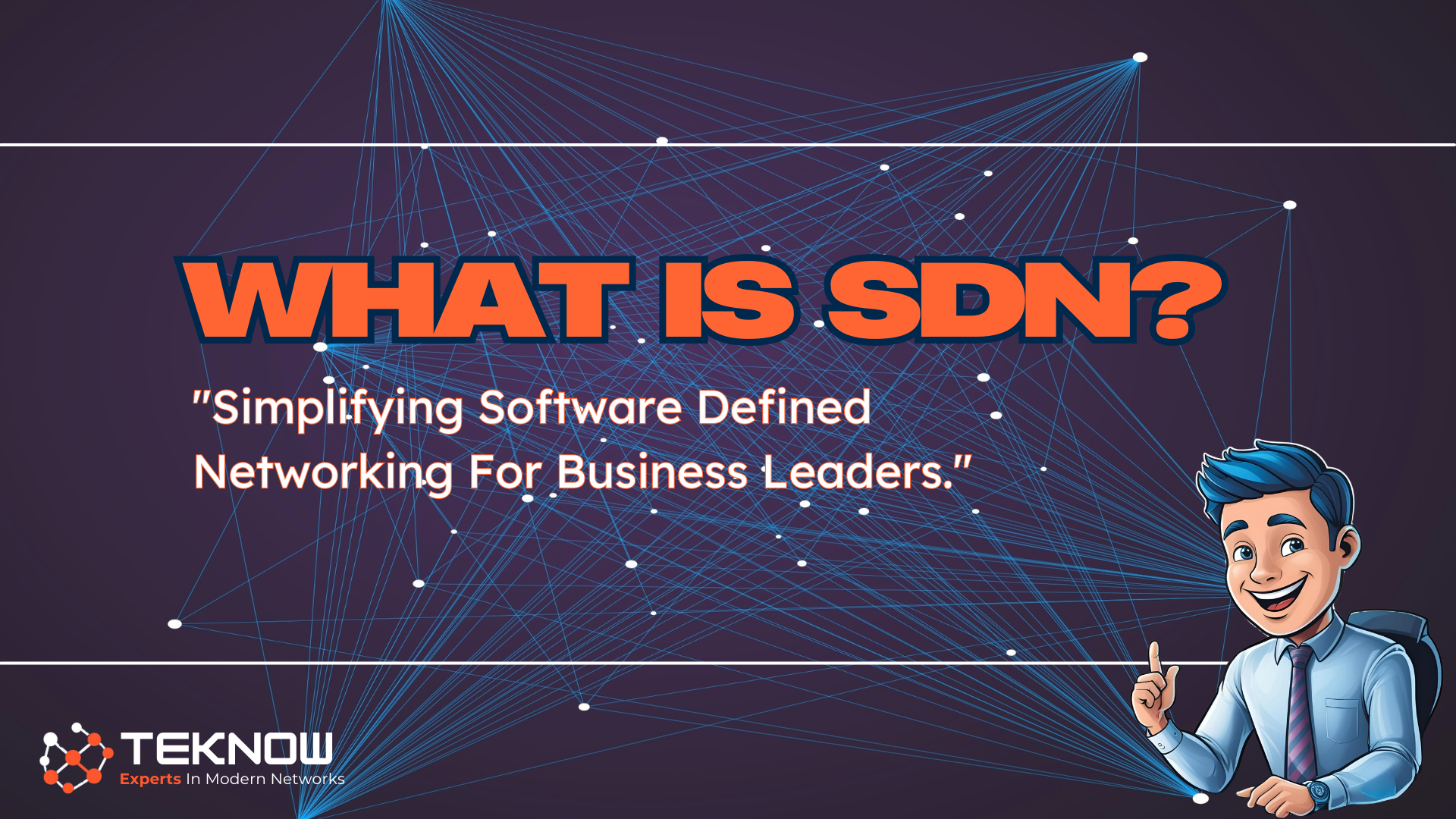
What is SDN? Simplifying Software-Defined Networking for Business Leaders
If you’ve ever felt like your network infrastructure was too rigid, too manual, or just plain slow to respond to business demands—you’re not alone.
That’s exactly the problem Software-Defined Networking (SDN) was created to solve.
But what is SDN, really? And why does it matter to your business?
Let’s break it down, minus the jargon.
What Is SDN in Simple Terms?
At its core, SDN separates the control plane (how decisions are made) from the data plane (how data moves) in a network. Instead of relying on hardware (like routers and switches) to do both jobs, SDN gives the brain of the network a more centralised role—often in software.
Here’s the thing: this shift allows businesses to manage their entire network from one place, make changes faster, and respond to demand in real time.
Think of it like this—traditional networks are like having to update 500 road signs one at a time. SDN is like managing all the traffic lights in your city from a single dashboard.
Why Business Leaders Should Care?
You’re not waking up wondering what the control plane is doing. You’re asking:
“How do we become more agile, secure, and cost-efficient—without adding complexity?”
This is where SDN delivers real business value.
- Faster Deployment & Changes
Need to spin up a new branch, onboard users, or push a security policy? SDN lets you do it with a few clicks—instead of weeks of manual config.
- Centralised Control & Visibility
You get a single source of truth across your network, whether you’re operating on-prem, in the cloud, or both.
- Lower Costs Over Time
Reduced hardware dependency + faster rollouts + fewer errors = savings. Period.
Built for Modern Infrastructure
SDN integrates seamlessly with cloud, containers, and edge computing. It’s not just scalable—it’s future-ready.
Real-World Use Cases Across Industries
Here’s how businesses are already putting SDN to work:
- Retail chains use SD-WAN (a form of SDN) to prioritise POS traffic and optimise uptime during peak hours.
- Healthcare providers use SDN to ensure secure, always-on access to critical apps and devices across clinics and hospitals.
- Financial institutions use intent-based SDN to enforce security policies and automate compliance.
- Manufacturing & logistics firms leverage SDN to ensure connectivity across distributed sites and IoT-heavy environments.
Getting Started with SDN: No, You Don’t Need to Rip and Replace
One of the biggest misconceptions? That you need to rebuild your network from scratch. You don’t.
In fact, many of Teknow’s clients start with:
- POC environment looking at the business case
- SD-WAN for smarter branch and hybrid cloud connectivity
- Private cloud or data centre overlays like Cisco ACI or VMware NSX
- Network automation pilots for tasks like config drift detection or intent enforcement
Have you ever noticed how the most impactful changes often start small—but scale fast?
That’s SDN.
Final Thoughts
To us, the most exciting part about SDN isn’t the technology itself—it’s what it unlocks for the business.
- Agility
- Security
- Faster Delivery
- Simplicity
In a time when networks need to scale faster than ever, SDN offers a smarter way forward.
Want to explore how SDN fits into your network strategy?
Let’s talk. At Teknow, we help businesses design, build, and secure modern, intelligent networks—step by step, at your pace.
#SDN #SoftwareDefinedNetworking #BusinessNetworking #DigitalTransformation #NetworkAutomation #NetworkInfrastructure #ITLeadership #CloudNetworking #EnterpriseIT #Teknow #NetworkStrategy #ModernNetworking #CIO #CTO #ITOperations #AgileNetworking

